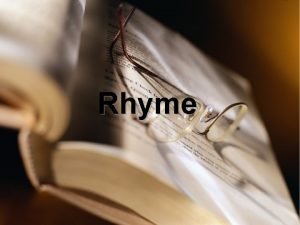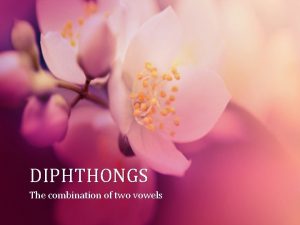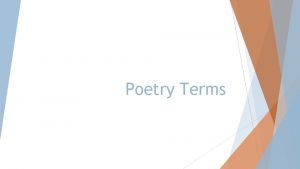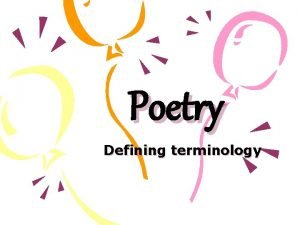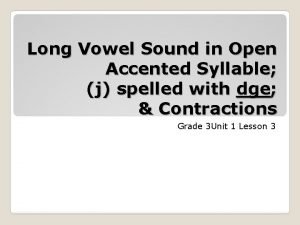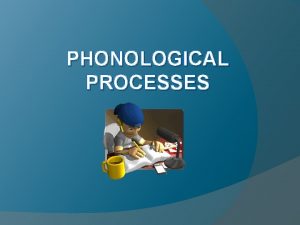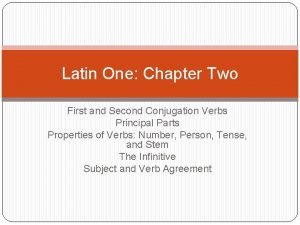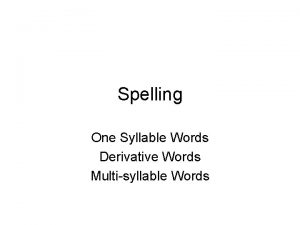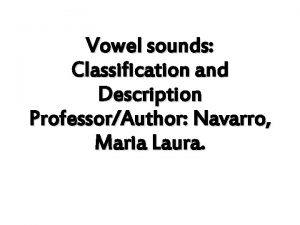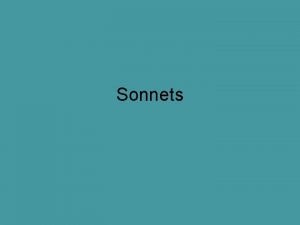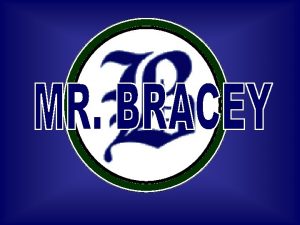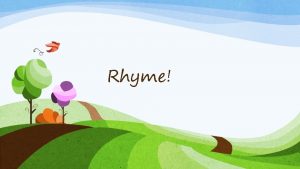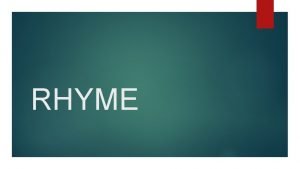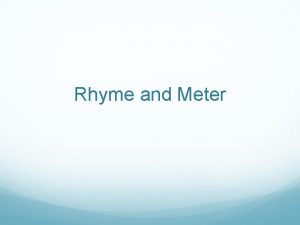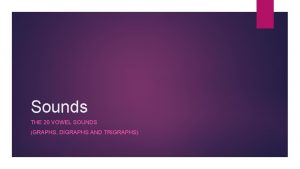Rhyme Rhyme the repetition of accented vowel sounds












- Slides: 12

Rhyme

Rhyme the repetition of accented vowel sounds and all sounds following them in words that are close together in a poem.

What is the Purpose of Rhyme? • It enhances the music of a poem • It gives the reader a sense of expectation • It gives a poem structure • It makes a poem easier to memorize • It is what makes a poem different from other types of literature

Types of Rhyme • Perfect Rhyme • Slant Rhyme • Internal Rhyme • Assonance • Consonance • Alliteration • Eye Rhyme

Perfect Rhyme • when the later part of the word or phrase is identical sounding to that of another. • also called a full rhyme, exact rhyme, or true rhyme. • The vowel sound in both words must be identical. e. g. “sky” and “high” • The articulation that precedes the vowel sound must differ. “leave” and “believe” is an imperfect rhyme, whereas “green” and “spleen” are perfect rhymes. The world is charged with the grandeur of God. It will flame out, like shining from shook foil;

Slant Rhyme • A rhyme that is not exact, but provides an approximation of the sound. • It happens when consonance occurs on the finals consonants of the words. Flesh, fair, unique, and you, warm secret that my kiss Follows into meaning Miranda, solitude Where my omissions are, still possible, still good, Dear other at all times, retained as I do this. ~ “Ferdinand” by W. H. Auden

Internal Rhyme • A rhyme within a line, or a rhyme which matches sounds in the middle of the line with sounds at the end. Once upon a midnight dreary, while I pondered, weak and weary ~ “The Raven” by Edgar Allan Poe

Assonance • the repetition of vowel sounds to create internal rhyming within phrases or sentences. Do you like blue? on a proud round cloud in white high night ~ E. E. Cummings

Consonance • the repetition of the same consonant two or more times in short succession. And the silken sad uncertain rustling of each purple curtain. ~ Edgar Allan Poe, “The Raven”

Alliteration • the repetition of a particular sound in the first syllables of a series of words or phrases. • It is a specific type of consonance. Hot-hearted Beowulf was bent upon battle. ~ Beowulf

Eye Rhyme • A rhyme of words that look but do not sound the same. This is sometimes intentional, and other times the result of changes in pronunciation. These pretty pleasures might me move To live with thee and be thy love. ~ “The Nymph’s Reply to the Shepherd” by Sir Walter Raleigh

Rhyme Scheme • The pattern of rhymed lines in a poem is the poem’s rhyme scheme. • To chart a rhyme scheme, give each rhyme at the end of a line a different letter of the alphabet: She walks in beauty like the night Of cloudless climes and starry skies; And all that’s best of dark and bright Meet in her aspect and her eyes. ~ “She Walks in Beauty” by Lord Byron A B
 Repeated vowel sounds
Repeated vowel sounds The repetition of accented vowel sounds is
The repetition of accented vowel sounds is Vowels and diphthongs examples
Vowels and diphthongs examples Repetition of initial vowel sounds
Repetition of initial vowel sounds Alliteration poetry definition
Alliteration poetry definition Stress accent
Stress accent Regressive assimilation
Regressive assimilation Coalescence phonological process
Coalescence phonological process Linking vowel to vowel examples
Linking vowel to vowel examples Lax vs tense vowels
Lax vs tense vowels First person in latin
First person in latin Final stable syllable words
Final stable syllable words Classification of vowel
Classification of vowel
